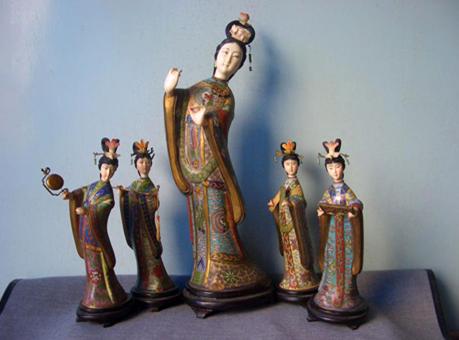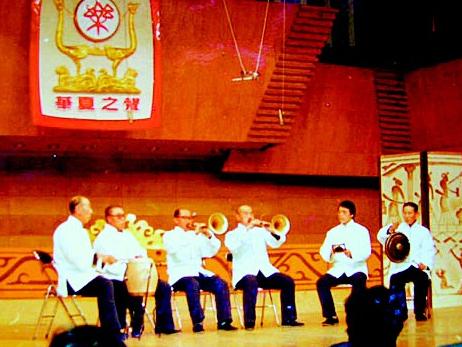
The Drum Music is popular in the whole Liaoning Province and is flourishing in Haicheng of South Liaoning as well as Niuzhuang, Nantai, Anshan, Shenyang and other places. Having been extremely prevalent since ancient times, it has imposed profound influence on drum music in many places in Northeast China. Among the frescos unearthed from ancient tombs of the Han and Wei Dynasties in Liaoyang City, there is an ancient drawing of drum performance, which is written with six characters - Drum, Blow, Perform, Tumble, Joy and Play.
As a kind of wind pipe music at early stage, Liaoning Drum Music was added with Chinese clarinet music in the Ming and Qing Dynasties, with the band of this type of music taking shape and being gradually matured in the middle period of the Qing Dynasty. Most of its repertoires are south and north Qu tunes in the Yuan and Ming Dynasties as well as Qu tunes in the Ming and Qing Dynasties, with a few of Qu tunes in the Tang and Song Dynasties retained. Appellations of seven tunes of Chinese clarinet in Liaoning Drum Music have provided important clues for the research on the development and evolution of the shape and structure of Chinese clarinet. Liaoning Drum Music was cored with wind pipe music at the initial stage. Chinese clarinet music emerged in the Ming Dynasty and was matured in the late 18th century after long-term development. It was afterwards integrated with wind pipe music and developed into the current Liaoning Drum Music.

Liaoning Drum Music is performed in two modes: Chinese clarinet music and wind pipe music, which are independent from each other with different musical instruments and respectively special opus. Chinese clarinet music has Chinese clarinet as its major musical instrument and large drum, small cymbal, clank, Bao gong and tuba as auxiliary ones, consisting of sitting performance and walking performance. In contrast, wind pipe music has duct (single duct and dual duct) and Chinese wind pipe as the major musical instruments, with one duct being matched with two Chinese wind pipes in general. Auxiliary musical instruments used in the performance of wind pipe music also include one large drum, one small cymbal and one clank. It may be added with flute, Huqin (Chinese violin), bowed instrument, dulcimer, etc. Similar to Chinese clarinet music, sitting performance is the major performing mode of wind pipe music.
Performers of Liaoning Drum Music are classified into two types: professional and semi-professional artists. Professional artists make a living by playing the Drum Music, while semi-professional ones are engaged in agriculture, handicraft industry, etc. They will carry out agricultural production or handicraft work in busy farming season, and make paid performance in slack season or at the time of ceremony holding.
Repertoires of Liaoning Drum Music include south and north Qu tunes, arias of dramas, folk songs, Qu tunes of instrumental music, and so on, which have been prevailing since the Yuan and Ming Dynasties. Bandsmen usually give rein to the tune at its end during the performance, presenting fervent emotions and distinct skills. Commonly-used repertoires of Liaoning Drum Music include Above the Kung-Chih, Notes of Plum Blossom, Serving Melody, Jujushuang and Cassia Twig and Flower. Having its own pedigree, Liaoning Drum Music has been passed down to the current generation by bond of folk customs and adhering to ancestors' instruction of "Masters' oral teaching inspires true understanding in prentices", with familial troupes as the descent.





